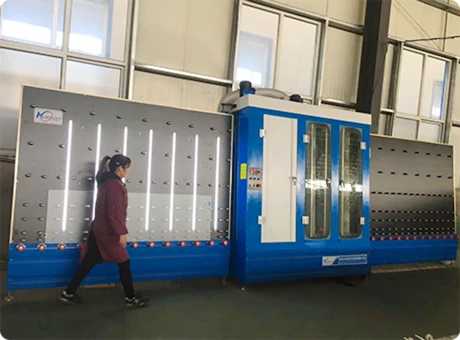The Versatility of Plain Glass Sheets
Plain glass sheets may seem like simple objects, but they play a crucial role in our daily lives and various industries. Their clarity, durability, and versatility make them indispensable material in architecture, interior design, and manufacturing.
What is Plain Glass?
Plain glass, also known as float glass, is a pane of transparent glass that is produced by floating molten glass on top of molten tin. This manufacturing process results in a smooth, uniform surface and ensures that the glass has minimal distortion. Plain glass sheets come in various thicknesses and sizes, making them suitable for multiple applications.
Architectural Applications
One of the most common uses of plain glass sheets is in architecture. They are widely used in windows, façades, and curtain walls because they allow natural light to enter buildings while providing visibility to the outside world. The aesthetic appeal of plain glass adds to the modern architectural style, giving buildings a sleek and sophisticated look. Additionally, advancements in technology have led to the development of energy-efficient glass options, which help in minimizing heating and cooling costs by increasing insulation properties.
Interior Design
plain glass sheet
In interior design, plain glass sheets are employed in various creative ways. They are often used as room dividers, providing an open feel without sacrificing light. Glass panels can enhance the visual spaciousness of a room while lending an air of elegance to spaces. Moreover, plain glass is a popular choice for tabletops, shelves, and display cases, offering a minimalist look that complements furniture styles ranging from contemporary to traditional. By reflecting light, plain glass helps brighten up rooms and can make spaces feel larger.
Safety and Security Features
Despite its delicate appearance, plain glass can be treated to enhance its strength and safety features. Laminated and tempered versions of plain glass offer increased resistance to impact and are less likely to shatter. These safety features make glass sheets suitable for high-traffic areas, such as commercial buildings and public spaces. When broken, tempered glass fragments into small, blunt pieces, reducing the risk of injury. As such, it’s a popular choice for skylights, shower doors, and glass railings.
Environmental Considerations
The sustainability of plain glass should also be noted. Glass is a 100% recyclable material and can be reused without losing its quality. As recycling technologies continue to improve, the environmental impact of glass manufacturing decreases. Choosing plain glass products supports eco-friendly practices, as they can be recycled to create new glass sheets, reducing the demand for raw materials.
Conclusion
In conclusion, plain glass sheets are more than just transparent panels; they are vital components of modern design and functionality. Their applications span a multitude of domains, from architecture to interior design, and their safety features make them an essential material in various environments. As we move toward a more sustainable future, the recyclability of glass reinforces its position as a valuable resource. Whether it’s allowing sunlight to illuminate a room or providing a sleek surface for functional design, plain glass sheets continue to shape the way we interact with our surroundings. Its simplicity and elegance serve as a reminder that sometimes the most unassuming materials can have the most profound impact on our lives.
 Afrikaans
Afrikaans  Albanian
Albanian  Amharic
Amharic  Arabic
Arabic  Armenian
Armenian  Azerbaijani
Azerbaijani  Basque
Basque  Belarusian
Belarusian  Bengali
Bengali  Bosnian
Bosnian  Bulgarian
Bulgarian  Catalan
Catalan  Cebuano
Cebuano  Corsican
Corsican  Croatian
Croatian  Czech
Czech  Danish
Danish  Dutch
Dutch  English
English  Esperanto
Esperanto  Estonian
Estonian  Finnish
Finnish  French
French  Frisian
Frisian  Galician
Galician  Georgian
Georgian  German
German  Greek
Greek  Gujarati
Gujarati  Haitian Creole
Haitian Creole  hausa
hausa  hawaiian
hawaiian  Hebrew
Hebrew  Hindi
Hindi  Miao
Miao  Hungarian
Hungarian  Icelandic
Icelandic  igbo
igbo  Indonesian
Indonesian  irish
irish  Italian
Italian  Japanese
Japanese  Javanese
Javanese  Kannada
Kannada  kazakh
kazakh  Khmer
Khmer  Rwandese
Rwandese  Korean
Korean  Kurdish
Kurdish  Kyrgyz
Kyrgyz  Lao
Lao  Latin
Latin  Latvian
Latvian  Lithuanian
Lithuanian  Luxembourgish
Luxembourgish  Macedonian
Macedonian  Malgashi
Malgashi  Malay
Malay  Malayalam
Malayalam  Maltese
Maltese  Maori
Maori  Marathi
Marathi  Mongolian
Mongolian  Myanmar
Myanmar  Nepali
Nepali  Norwegian
Norwegian  Norwegian
Norwegian  Occitan
Occitan  Pashto
Pashto  Persian
Persian  Polish
Polish  Portuguese
Portuguese  Punjabi
Punjabi  Romanian
Romanian  Russian
Russian  Samoan
Samoan  Scottish Gaelic
Scottish Gaelic  Serbian
Serbian  Sesotho
Sesotho  Shona
Shona  Sindhi
Sindhi  Sinhala
Sinhala  Slovak
Slovak  Slovenian
Slovenian  Somali
Somali  Spanish
Spanish  Sundanese
Sundanese  Swahili
Swahili  Swedish
Swedish  Tagalog
Tagalog  Tajik
Tajik  Tamil
Tamil  Tatar
Tatar  Telugu
Telugu  Thai
Thai  Turkish
Turkish  Turkmen
Turkmen  Ukrainian
Ukrainian  Urdu
Urdu  Uighur
Uighur  Uzbek
Uzbek  Vietnamese
Vietnamese  Welsh
Welsh  Bantu
Bantu  Yiddish
Yiddish  Yoruba
Yoruba  Zulu
Zulu 

